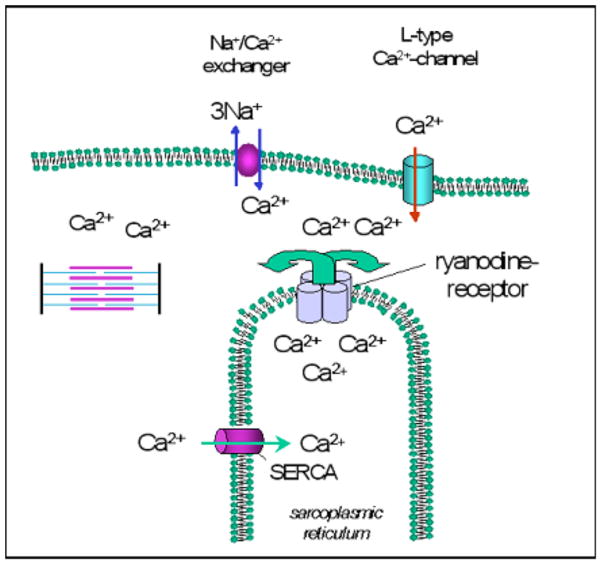Fig. 1.
Role of NCX in cellular Ca2+ cycling during excitation-contraction coupling in cardiac myocytes. During the action potential Ca2+ enters the myocyte via the voltage dependent sarcolemmal L-type Ca2+ channel, and thus triggers further Ca2+ release from the sarcoplasmic reticulum via sarcoplasmic Ca2+ release channels (ryanodine receptors). The released Ca2+ diffuses towards the myofilaments and induces the contraction. During diastole Ca2+ is shifted back into sarcoplasmic reticulum by the Ca2+ ATPase of the sarcoplasmic reticulum (SERCA). The Na+/Ca2+ exchanger extrudes Ca2+ from the cytosol into the extracellular space.

